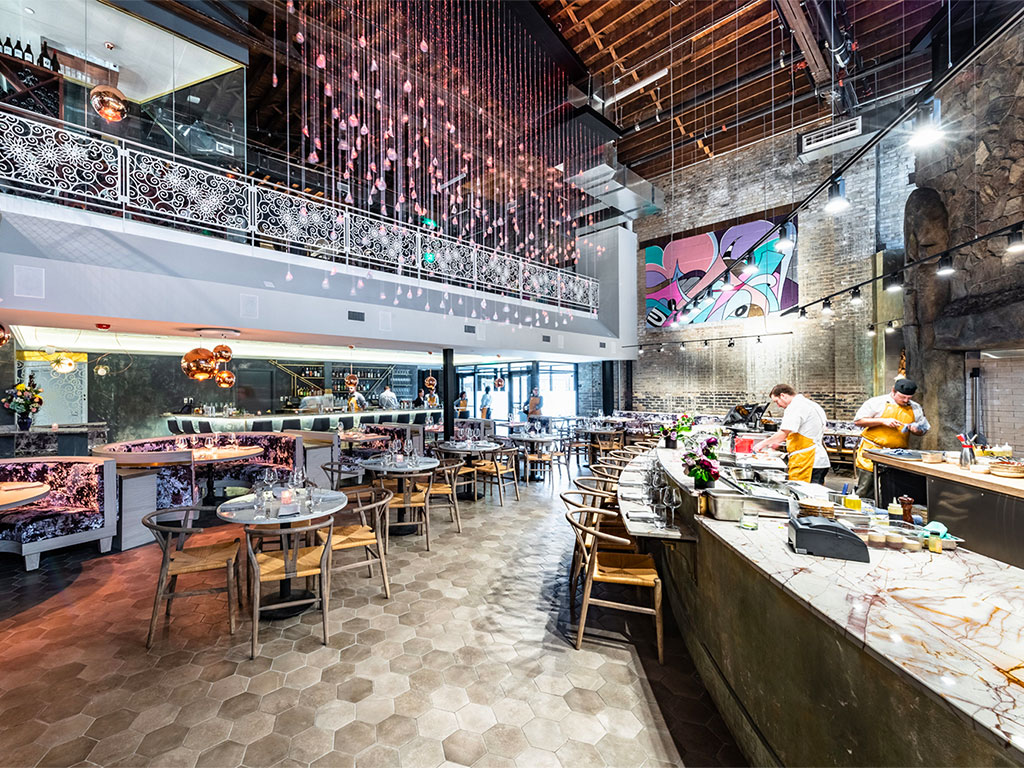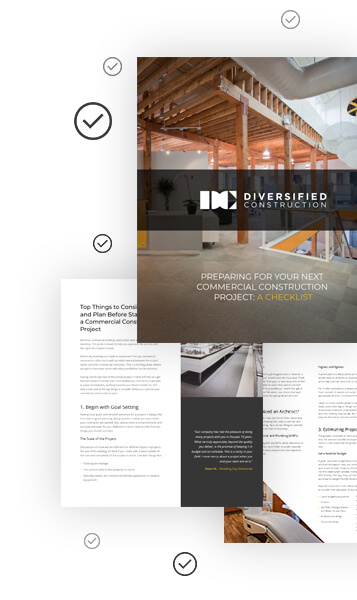Commercial Kitchen Construction
In the food industry, the kitchen is the heart of a restaurant. An efficient and effective kitchen will not only allow for easy productivity among employees, but it will also ensure financial success for the owners.
It’s no secret the quality of the food, as well as the quality of service, are both directly affected by the kitchen. In order for the kitchen to contribute to a restaurant's success, it needs to be thoughtfully and thoroughly planned out. Each restaurant is unique, having different requirements and needs (there’s no one size fits all approach!), so it’s important to design a commercial kitchen that aligns with the restaurant.
In this article, we will discuss the most important factors to consider when building a commercial kitchen.
Kitchen Equipment Vendor
Onboarding a kitchen equipment vendor early on in the construction process is not only recommended, but it is imperative. The equipment will determine the layout of the kitchen and it will also inform contractors where to install plumbing, mechanical, and electrical hookups. At Diversified Construction, we have several exceptional kitchen equipment vendors to connect you with, all of which will ensure you hit the ground running.
A commercial kitchen requires specific equipment to not only function efficiently, but to also stay compliant with local laws and regulations. Choosing an equipment vendor as your first step will streamline the build out process and ensure accuracy.
So, “What type of equipment goes into a commercial kitchen?” you may ask. Well, it can vary from restaurant to restaurant – depending on the menu. With that being said, there are a few pieces of equipment found in most (if not all) commercial kitchens. Keep reading to learn more about the necessary equipment needed for a commercial kitchen.
Refrigerator and Freezer
Every restaurant needs to keep their ingredients fresh, so proper refrigeration and freezing units are vital. In order to have a well organized refrigerator, as well as easy access for employees to retrieve items, walk-in cooling units are a necessity.
When selecting the size of a refrigerator and freezer, keep in mind the amount of items that will need to be stored. A walk-in cooling unit for a restaurant should optimize the space and fit the restaurant’s specific needs.
There are two types of walk-in cooling units to choose from: prefabricated and built-in. Prefabricated cooling units come in a variety of sizes, ensuring it will fit nicely into your space. Built-in cooling units are customized to your needs and designed to blend into the surrounding environment.
Cooking Equipment
The cooking equipment within the kitchen is how everything comes together to make a plate for customers. While the equipment within a kitchen will depend on the menu, some common equipment includes a broiler, stove, open flame grill, flat grill, deep fryer, convection oven, and so forth.
Certain cooking equipment will require the installation of ventilation systems, which keeps the air fresh and a healthy indoor environment. It’s important to know the type of equipment that will be within a space before designing the layout so your contractor can properly determine factors like the type and size of make up air units and fire suppression systems.
Surfaces
Durable surfaces will be needed throughout a commercial kitchen to prepare food and assemble the dishes. Kitchen surfaces need to be smooth, easy to clean, and non porous. We recommend using fiber reinforced polymers (FRP) and stainless steel products – these have both been popular surfaces among commercial kitchens due to their sturdiness and simple cleaning requirements.

Principles of a Commercial Kitchen Design
There are several key principles to consider when designing a commercial kitchen, which will help lead a restaurant to a safe and successful business. Two of the most important principles are implementing proper safety precautions and choosing a suitable layout for the employees to operate efficiently.
Safety
Kitchens are the hotspot in a restaurant, which is why they are exposed to many risks. Staying up to code on local regulations and taking the necessary safety precautions will not only keep the employees and guests safe, but it will also maintain a prosperous establishment.
Codes and regulations can vary from state to state – your contractor will be aware of these codes and will help guide you through them when building out the commercial kitchen. Listed below are just a few of the main safety standards every commercial kitchen should follow.
Fire Safety: Fire is (of course) a major risk within a restaurant, as flames and heat are a main factor in cooking the food. To ensure safety, each restaurant should have fire exits, smoke detectors, and fire extinguishers to help in the event of an emergency.
Health Codes: Abiding by health codes is an essential component when serving food and restaurants should guarantee the space is designed and prepared for safe food consumption. For example, some state’s health codes prohibit the use of wood surfaces when preparing food.
Employee Safety: Employees are constantly exposed to wet and greasy floors. Slippery floors could lead to potential accidents like someone falling and hurting themselves. In order for employees to safely do their job, placing slip resistant mats in high risk areas (like behind the bar or dishwashing station) is a beneficial strategy to prevent accidents.
Layout
The layout of a kitchen will vastly depend on the amount of space an establishment has, as well as the type of equipment that will be occupying the space. It’s important not to overcrowd a space, as the layout will affect the functionality and workflow of the restaurant.
For example, the layout of a food truck would be different from a layout of a high-end restaurant. Layout options for a food truck are more limited due to space constraints, so they would typically opt for a galley layout, as this layout will optimize the tight space and allow the few staff to work efficiently. On the other hand, a high-end restaurant may want to prioritize the dining experience by choosing an open kitchen layout. This kitchen is displayed to the dining area in this layout, which allows guests to see behind the scenes.
Each commercial kitchen should be uniquely designed for employees to easily move around and efficiently do their jobs. Optimizing space and choosing the best fitting layout is a key principle to ensure a productive establishment.
Cleaning Commercial Kitchens
Besides preparing and cooking food, a primary task within all restaurants is cleaning. The cleanliness of a restaurant is vital and can determine if customers want to return – it's no secret that people want to dine out at well cleaned establishments. Ensuring an easy to clean establishment is a crucial component throughout the design process.
In order for employees to maintain a clean establishment, they need to be given the proper tools and equipment. Listed below are just a few of the items restaurants will need to stay compliant with health standards.
- Sinks for handwashing
- Dishwashing station
- Waste disposal areas
- Grease trap
- Chemicals and sanitizers
- Cleaning chemical buckets
- Brooms, dustpans, mops, rags, etc.
The list of necessary cleaning supplies and equipment goes on. Employees have daily, weekly, and monthly cleaning tasks they need to complete in order to keep the restaurant up and running. Such tasks include wiping down floors and walls, cleaning cooking equipment (grill, fryer, etc.), disinfecting food preparation areas, emptying grease traps, washing ventilation hoods, and so forth. If the kitchen is designed for easy use, cleaning tasks will be completed with no problem.
Conclusion - How to Build a Commercial Kitchen
In order for employees to efficiently and effectively do their jobs, the kitchen needs to be properly designed and equipped. The kitchen is the heart of the restaurant, determining the flow of operations. When successfully built out, the restaurant can run smoothly.
Diversified Construction specializes in building and remodeling commercial kitchens, with over 60 years of business experience in the Twin Cities. Contact us today at 952-929-7233 if you’re looking to start a new project.

